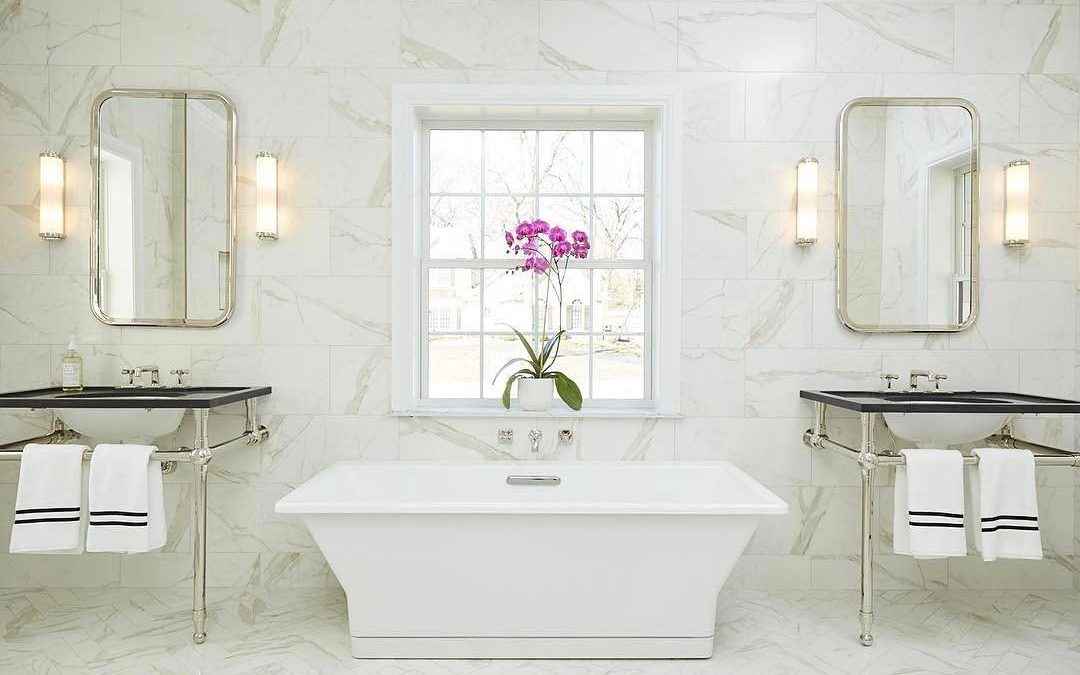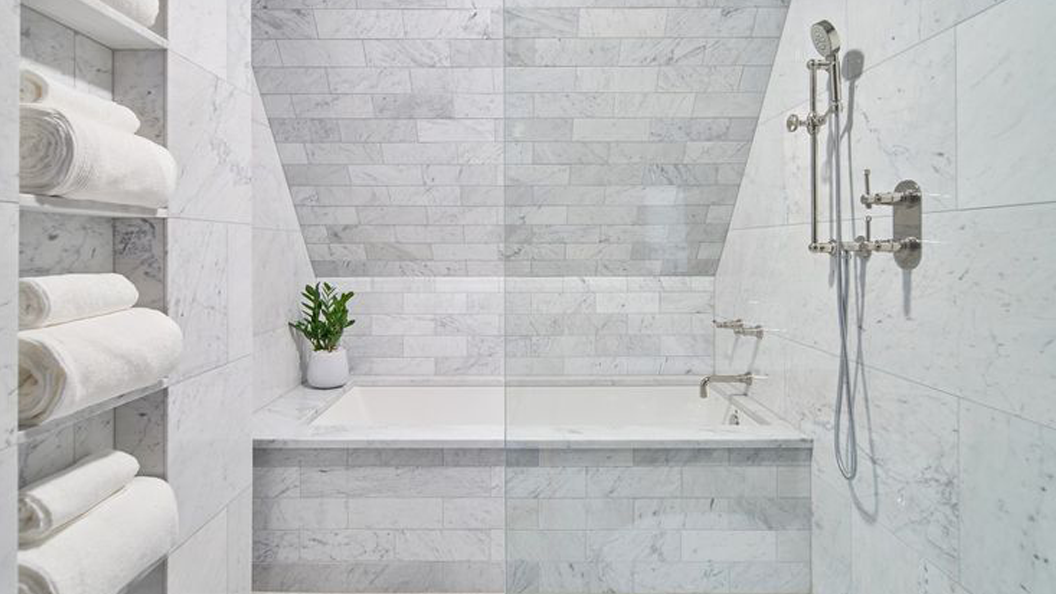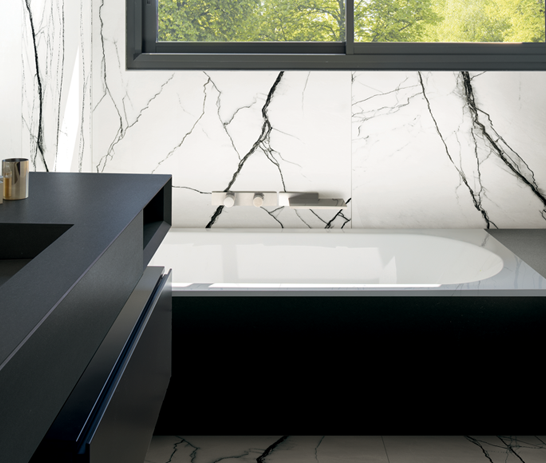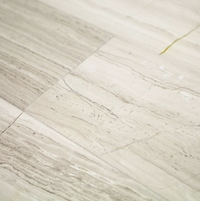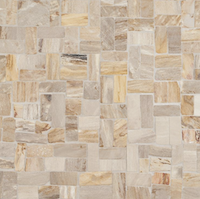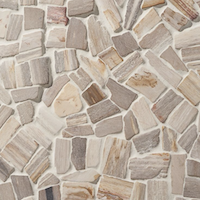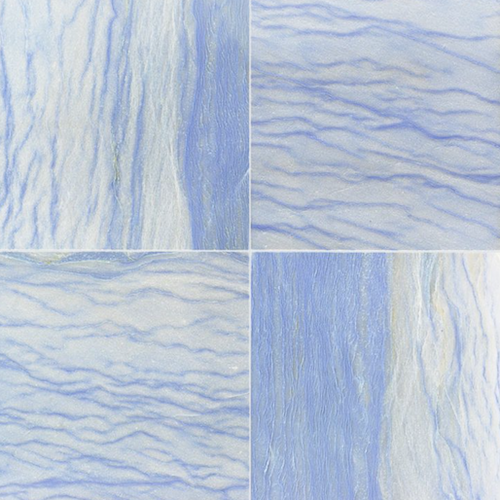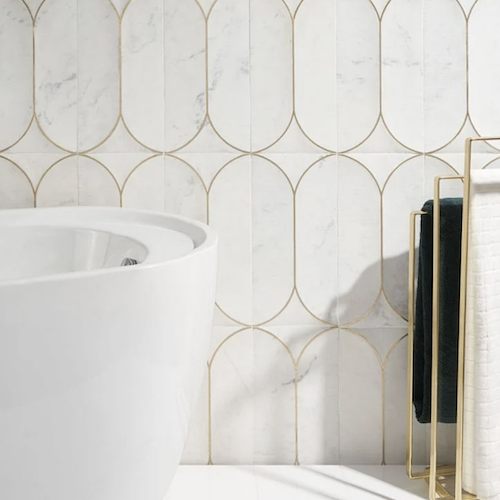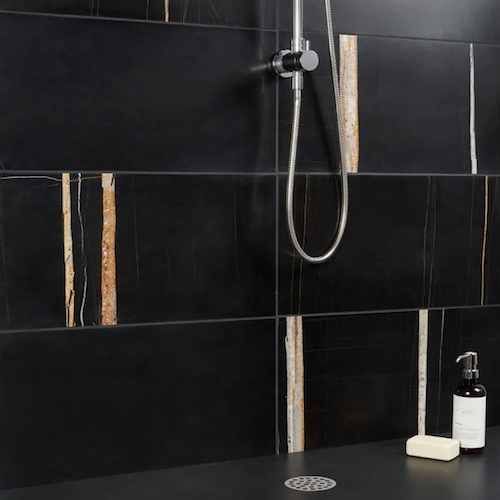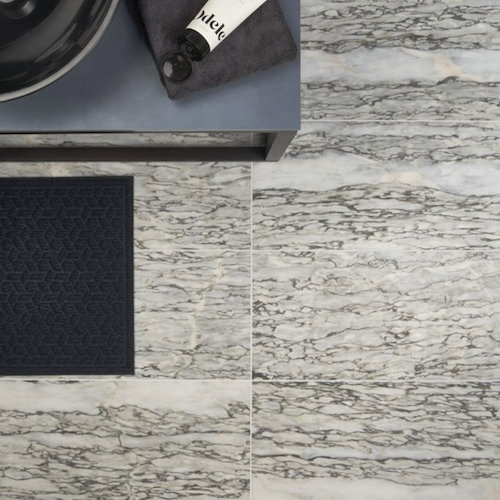Natural stone is one of the most time-tested and popular building materials in the world, beloved for its timeless beauty and natural properties and gracing the most famous architectural structures in history. Each part of the globe offers a unique environment where different elements and mother nature combine to create a large variety of different patterns, colors, and textures. These endless options make every natural stone application one-of-a-kind and provide an artist’s palette to showcase the masterwork of nature in any space.
Natural stone also offers great flexibility of design, as each stone offers its own unique design properties and possibilities. Let’s dive into what makes natural stone so special – from the different types of stones to the pros and cons of incorporating natural stone tile in your designs.
This Article Includes:
- The definition of natural stone
- The different types of natural stone tiles
- Common finishes for natural stone tiles
- The benefits of Natural Stone
- How to design with natural stone
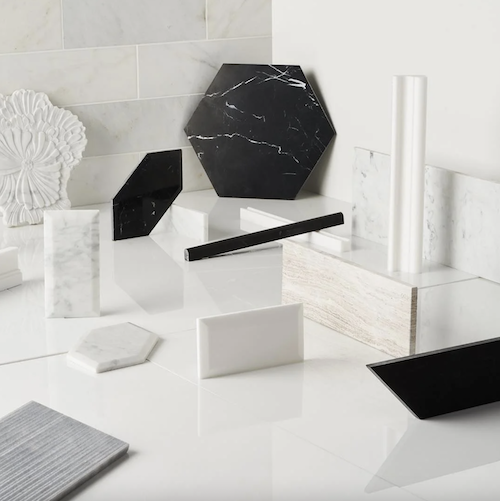
What is Natural Stone?
“Natural Stone” is defined as an organic solid composition made up of natural minerals quarried from the earth. The origin story of natural stone starts million years ago, as a combination of heat and pressure condensed various minerals to form solid rocks in the ground. As the earth’s crust began to grow and erode, it pushed these minerals from its core and formed massive rock deposits, which serve as the quarries from which we mine natural stone today.
These products of the earth are more than just rocks. The stone that is quarried for design and architecture is hand-picked from the best, highest-quality sources. Stone experts around the world select the most consistent, beautiful, and durable natural stones, combining art and science to produce timeless products.
Where Does Natural Stone Come From?
Natural stone quarries are found across the globe, most notably in Italy, Spain, Portugal, China, India, Canada, and the United States. In these quarries, stone experts work with precision and knowledge through processes that combine tradition and technology.
After the stone is extracted from the earth, it is cut into blocks, each weighing roughly 15,000 to 25,000 pounds. These blocks are then cut into thin pieces called slabs. The slabs are transported to fabricators, who ultimately shape and process them to suit commercial needs.
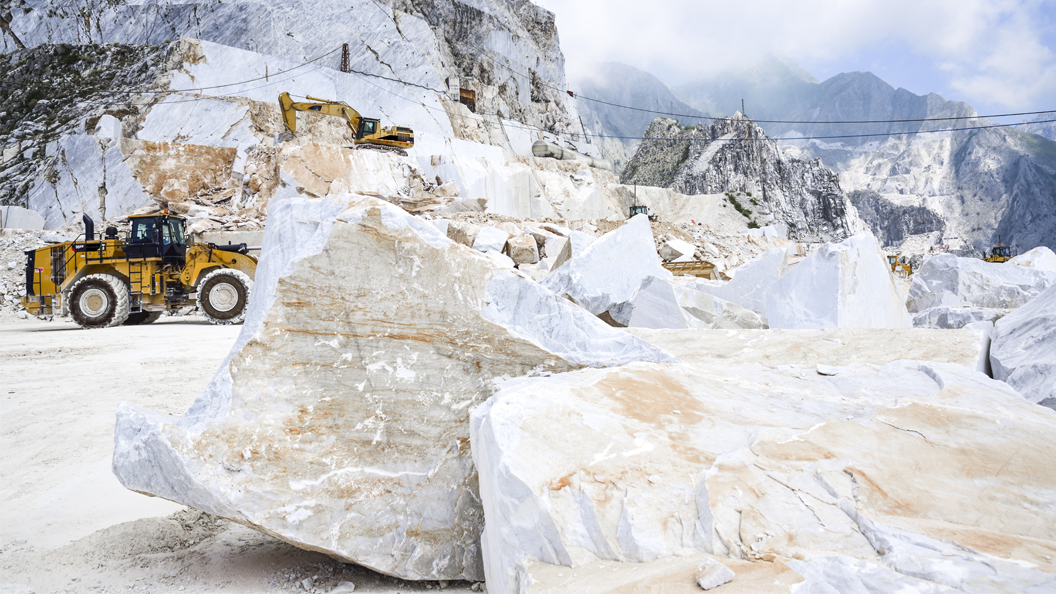
Types of Natural Stone
There are many different types of natural stone, and each type has its own set of properties. Before selecting a stone to design with, it’s important to what are the unique traits of each stone and what is the recommended application for it.
Marble – Loved for its beautiful veining and coloration, marble offers a stylish luxury look in any application. This relatively softer stone can be carved, sculpted, and cut easily, making it one of the most versatile stones in the market. Often associated with beautiful art and traditional architecture, marble is increasingly popular in recent years, and thanks to technological advancement are more accessible and budget-friendly than ever.
Granite – One of the most popular stones in the market, granite offers unmatched strength and durability. Thanks to its incredible density, granite is an extremely hard stone, which makes it perfect for large architectural projects, as well as high-traffic areas. Granite offers an amazing variety of colors and finishes, offering a decorative value as well as a functional one.
Slate – A metamorphic rock, slate is a dense, durable, and resistant natural product, making it ideal for flooring, high-traffic areas, and outdoor applications. Formed over thousands of years of sedimentary deposit and compression, slate presents beautifully textured layers in a variety of shades.
Limestone – Showcasing muted and soft natural tones, limestone is a causal and understated stone that fits a variety of installations. Limestone is a sedimentary stone comprised primarily of calcium deposits and has been used for thousands of years in buildings around the world. Limestone products are extremely versatile, offering a neutral and durable look for countertops, flooring, bathrooms, and outdoor applications.
Onyx – Offering a unique look, onyx is a translucent stone with a naturally semi-glossy surface. Onyx is composed of crystalline and silica, and due to its similarity to agate, it creates a beautiful visual reminiscent of precious stones. Onyx is less durable than other stones and therefore is mostly used for decorative statement designs, such as feature walls and fireplaces.
Travertine – Known for its banded, pitted appearance, travertine is a form of limestone deposited by mineral springs, that showcases a rich and distinctive look. Commonly found in warmer shades such as tan, brown, and beige, travertine carries a uniquely warm character. Due to its natural fissures, travertine is often filled with grout, resin, or cement to create a smooth, more resistant surface.
Quartz – Combining one-of-a-kind beauty of supreme durability, quartz is a medium-grained textured rock that naturally shimmers and sparkles with tiny quartz crystals. Similar to slate, quartz contains diverse mineral content, which gives it a huge variety of colors, patterns, and variations. Thanks to its looks and durability, quartz is perfect for almost any application – from flooring and outdoor surfaces to decorative features.
Types of Finishes
Finishing is an essential part of the processing of natural stone. A finish has both decorative and functional properties; it affects the look of the stone surface, and also provides protection and added durability. These are the common finishes for natural stone tiles and their distinct benefits.
Polished finish – a polished finish gives a glossy, shining surface to the stone, highlighting its color and pattern. In the polishing process diamond pads are used to mechanically rub it until it attains a natural gloss. After coating and sealing, a polished stone becomes completely non-porous and resistant, making it perfect for countertops and interior floors.
Honed finish – a honed finish creates a smooth, natural texture with a range of looks, from a fully matte surface to a satin sheen. A honing process is composed of grinding and sanding of the stone until it’s fully smooth, but not reflective. A honed stone is slip-resistant and scratch-resistant, making it perfect for walls and floors of wet areas such as bathrooms and poolside.
Natural cleft – more commonly used for slate, limestone, or sandstone, a natural cleft is essentially a minimal treatment that preserves the original texture of the stone. A standard natural cleft is achieved by cutting the stone parallel to its natural fissures and layers, resulting in a textured slab that does not require any additional finish or coating. Natural cleft stones are commonly used for outdoor applications, bringing a natural earthy feel with a rustic flair.
Tumbled finish – a tumbled finish simulates an aging effect on the stone, making it look antique and rustic. That being said, a tumbled stone still presents a smooth, soft surface, making it suitable for a variety of applications, such as outdoor areas, wet areas, and even backsplashes.
The Benefits of Natural Stone
Natural stone has become an increasingly popular design material in the last few decades not only for large-scale construction and commercial buildings but also for residential usage. Natural stone tiles are no longer exclusive to impressive monuments and architectural marvels – they are in the home, serving both structural and decorative purposes. Here are some of the benefits of using natural stone tiles in your next project:
Natural beauty – prized for its distinctive beauty, when it comes to stone no two pieces are ever alike. The natural beauty of stone contains grains, veining, patterns, shade variations, rendering it unique and exquisite. The look of stone is truly one-of-a-kind.
Durability and strength – stone is naturally strong and durable, and with proper processing, coating, and finishing, it will hardly break or crack. Natural stone can withstand extreme weather, temperature changes, pressure, and friction. It rarely fades in color and appearance, and often, its natural wear only enhances its beauty and appeal.
Diversity of application – thanks to the strength and variety of stone, it can be used for almost any application, including flooring, countertops, outdoor walls, showers, fireplaces, and beyond. With proper finishing, stone provides an extremely hygienic material that does not absorb or retain dirt, liquids, and hazardous materials, making it suitable for areas such as kitchens and bathrooms.
Sustainability – as a product of the earth, the manufacturing process of stone is more sustainable than many other types of products. Natural stone tiles do not contain artificial materials, are easy to recycle, and don’t produce any toxins.
Designing with natural stone
With a wide variety of different colors, textures, and finishes, natural stone tiles complement and elevate any style or décor – from traditional to modern, rustic to glamourous. Its natural durability and availability of full suites of sizes and formats make any application a success.
As with any other organic material, no two tiles are ever alike when it comes to natural stone. Designing with natural stone calls for embracing this natural variation and enhancing it, highlighting each stone’s unique veining, texture, and colors.
TileBar’s selection of natural stone tiles and mosaics features the highest quality stones in the world, culled from the best quarries, cut, and processed to perfection. Our vast variety of stone products provides endless design possibilities for any project.

